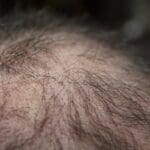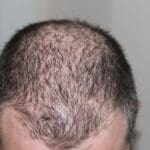Hair loss is a common concern for many individuals, causing thinning areas on the scalp that can be quite distressing. Fortunately, there are solutions available to help conceal these areas and restore confidence. This article delves into the topic of hair loss and explores how hair loss concealers can be used effectively to camouflage thinning areas.
Understanding the causes of hair loss is crucial in addressing the issue effectively. Hair loss can be attributed to a variety of factors, including genetics, hormonal changes, and medical conditions. By identifying the underlying cause, individuals can seek appropriate treatment options and implement strategies to prevent further hair loss.
When it comes to treating hair loss, there are several options available. Medications, such as minoxidil and finasteride, can help slow down hair loss and promote regrowth. Hair transplant surgery is another popular choice, where healthy hair follicles are transplanted to the thinning areas. Additionally, laser therapy has shown promising results in stimulating hair growth.
While these treatments provide long-term solutions, hair loss concealers offer an immediate and temporary way to hide thinning areas. Topical hair loss concealers are a popular choice, as they are easy to use and provide natural-looking results. These concealers come in various forms, such as sprays, powders, and creams, and are applied directly to the scalp to create the appearance of fuller hair.
Applying hair loss concealers is a straightforward process that can be done at home. By following a few simple steps, individuals can achieve a seamless and undetectable result. It is essential to choose the right color and texture that matches the natural hair, ensuring a natural blend. Additionally, taking proper care during application and styling can enhance the overall appearance and longevity of the concealer.
Aside from topical concealers, there are alternative options available for individuals experiencing hair loss. Hair fibers, for example, are tiny synthetic or natural fibers that adhere to the existing hair, instantly adding volume and thickness. Scalp micropigmentation is another option, where pigments are tattooed onto the scalp to create the illusion of hair follicles. Wigs and hairpieces are also popular choices, providing a quick and effective way to conceal thinning areas.
Managing hair loss emotionally is an essential aspect of the journey. Hair loss can have a significant impact on an individual’s self-esteem and confidence. It is crucial to address these emotions and develop strategies to cope with the changes. Support groups and therapy can provide a safe space for individuals to share their experiences and seek guidance from others going through similar situations.
Finally, embracing hair loss can be a powerful way to find empowerment and self-acceptance. Rather than hiding or feeling ashamed, individuals can choose to embrace their baldness and redefine their beauty standards. By focusing on self-love and self-care, individuals can cultivate a positive mindset and embrace their unique appearance.
Causes of Hair Loss
Causes of Hair Loss
Understanding the various factors that can contribute to hair loss is crucial in finding effective solutions. Hair loss can be caused by a combination of genetics, hormonal changes, and medical conditions.
Genetics play a significant role in determining whether an individual will experience hair loss. If there is a history of baldness in your family, you may be more prone to losing hair as well. This is because certain genes can make hair follicles more sensitive to the hormone dihydrotestosterone (DHT), which can lead to hair thinning and eventual loss.
Hormonal changes can also contribute to hair loss. For example, during pregnancy, hormonal fluctuations can cause hair to enter a resting phase, resulting in increased shedding postpartum. Similarly, hormonal imbalances such as those associated with thyroid disorders can disrupt the hair growth cycle and lead to hair loss.
In addition to genetics and hormonal changes, certain medical conditions can also trigger hair loss. Conditions such as alopecia areata, an autoimmune disease that causes patchy hair loss, and telogen effluvium, a condition in which a significant amount of hair enters the resting phase and falls out, can result in noticeable thinning or bald patches.
By understanding the various causes of hair loss, individuals can better identify the underlying factors contributing to their own hair loss and seek appropriate treatment options. Whether it’s addressing genetic predisposition, managing hormonal imbalances, or treating underlying medical conditions, taking a comprehensive approach can help combat hair loss effectively.
Treatment Options for Hair Loss
Treatment options for hair loss vary depending on the underlying cause and severity of the condition. It’s important to consult with a healthcare professional or a specialist in hair loss to determine the most suitable treatment plan for your specific needs. Here are some common treatment options that are often considered:
- Medications: There are various medications available that can help slow down hair loss and promote regrowth. These may include topical treatments like minoxidil or oral medications like finasteride. It’s important to follow the prescribed dosage and usage instructions for optimal results.
- Hair transplant surgery: For individuals with advanced hair loss or those who desire a more permanent solution, hair transplant surgery can be an option. This procedure involves removing hair follicles from one part of the scalp (usually the back or sides) and transplanting them to the thinning or balding areas. It’s a surgical procedure that requires careful consideration and consultation with a qualified surgeon.
- Laser therapy: Low-level laser therapy (LLLT) is a non-invasive treatment option that uses red light to stimulate hair growth. It can be done at home using handheld devices or in specialized clinics. LLLT is believed to improve blood circulation to the hair follicles and promote hair regrowth.
It’s important to note that the effectiveness of these treatment options may vary from person to person. Results may also take time, and consistency is key. Additionally, it’s crucial to maintain a healthy lifestyle, including a balanced diet and proper hair care, to support overall hair health.
Topical Hair Loss Concealers
Topical Hair Loss Concealers
Topical hair loss concealers are a popular solution for individuals dealing with thinning hair or bald patches. These products are designed to camouflage the areas of the scalp where hair loss is most noticeable, providing a temporary solution that can help boost confidence and improve the overall appearance of the hair.
So, how do topical hair loss concealers work? These products typically come in the form of powders, sprays, or creams that are applied directly to the scalp or hair. They contain tiny, colored particles that adhere to the existing hair strands, creating the illusion of thicker, fuller hair. The particles blend seamlessly with the natural hair color, making the thinning areas less noticeable to the naked eye.
There are different types of topical hair loss concealers available in the market to suit various needs and preferences. Some products are specifically formulated for men, while others are designed for women. Additionally, there are options for different hair colors, textures, and levels of hair loss. It’s important to choose a concealer that matches your hair color and blends well with your natural hair to achieve a natural-looking result.
When selecting a topical hair loss concealer, it’s also important to consider the application method. Some concealers come in spray form, allowing for easy and precise application. Others may require the use of a brush or sponge for even distribution. It’s recommended to follow the instructions provided by the manufacturer to ensure optimal results.
Overall, topical hair loss concealers can be a convenient and effective way to temporarily camouflage thinning areas on the scalp. They offer a non-invasive solution for individuals looking to enhance the appearance of their hair and boost their self-confidence. However, it’s important to note that these concealers are not a permanent solution for hair loss and may require regular application to maintain the desired effect.
Applying Hair Loss Concealers
Applying hair loss concealers is a simple process that can help create a natural-looking result. Here are step-by-step instructions to guide you through the application:
- Cleanse and dry the scalp: Before applying any hair loss concealer, it is important to ensure that your scalp is clean and dry. Use a gentle cleanser to remove any dirt or oil, and pat your scalp dry with a towel.
- Choose the right shade: Select a hair loss concealer shade that matches your natural hair color. This will help the concealer blend seamlessly with your existing hair, creating a natural appearance.
- Apply the concealer: Start by applying a small amount of the concealer directly onto the thinning areas of your scalp. Use gentle, circular motions to blend the concealer into your hair, ensuring even coverage.
- Build up the coverage: If needed, you can gradually build up the coverage by applying additional layers of the concealer. Remember to blend each layer carefully for a seamless finish.
- Style your hair: Once the concealer is applied, you can style your hair as desired. Use a comb or your fingers to create your preferred hairstyle, ensuring that the concealer remains in place.
- Set the concealer: To enhance the longevity of the concealer, you can use a hairspray or setting spray to lock it in place. This will help the concealer withstand humidity and keep your hair looking natural throughout the day.
By following these step-by-step instructions, you can achieve a natural-looking result when applying hair loss concealers. Remember to take your time and blend the concealer carefully for a seamless and undetectable finish.
Choosing the Right Hair Loss Concealer
Choosing the right hair loss concealer is crucial for achieving a natural-looking result. Here are some tips to help you select the perfect hair loss concealer based on your hair color, texture, and personal preference.
Hair Color: When choosing a hair loss concealer, it’s important to consider your natural hair color. Look for a concealer that matches your hair color closely to ensure a seamless blend. Many brands offer a range of shades to cater to different hair colors, from blonde to black. If you have highlights or lowlights, you may want to consider a concealer that offers multiple shades or a blendable option.
Hair Texture: The texture of your hair can also play a role in selecting the right hair loss concealer. If you have fine or thin hair, opt for a lightweight concealer that won’t weigh your hair down or make it look greasy. On the other hand, if you have thick or coarse hair, a thicker concealer may be more suitable for providing better coverage. Consider the consistency and texture of the concealer to ensure it blends well with your natural hair.
Personal Preference: Everyone has different preferences when it comes to hair products. Some may prefer a concealer that is easy to apply and quick to dry, while others may prioritize a long-lasting formula. Consider your lifestyle and daily routine when choosing a hair loss concealer. If you’re always on the go, a portable and travel-friendly option may be ideal. Additionally, take into account any specific needs or concerns you may have, such as sensitivity to certain ingredients or the desire for a vegan or cruelty-free product.
Remember, the right hair loss concealer can make a significant difference in camouflaging thinning areas and boosting your confidence. Take the time to research and try different options to find the perfect match for your hair color, texture, and personal preferences.
Alternative Hair Loss Concealers
When it comes to concealing hair loss, there are several alternative options available apart from topical hair loss concealers. These alternatives provide different solutions for individuals looking to camouflage thinning areas on their scalp. Let’s explore some of these alternative hair loss concealers:
- Hair fibers: Hair fibers are tiny, natural or synthetic fibers that adhere to existing hair strands, creating the illusion of thicker and fuller hair. They are available in a variety of colors to match different hair shades and can be easily applied with a sprinkle or spray technique.
- Scalp micropigmentation: Scalp micropigmentation is a non-surgical procedure that involves tattooing tiny dots onto the scalp to mimic the appearance of hair follicles. This technique creates the illusion of a closely shaved head or a buzz cut, making the scalp appear fuller and camouflaging areas of hair loss.
- Wigs: Wigs are a popular and versatile option for individuals experiencing significant hair loss. They come in various styles, colors, and lengths, allowing individuals to completely transform their look. Wigs can be made from synthetic or natural hair and can be customized to fit the wearer’s head shape and desired style.
Each of these alternative hair loss concealers offers unique benefits and can be tailored to suit individual preferences and needs. Hair fibers provide a temporary solution that can be easily applied and washed off, making them ideal for daily use. Scalp micropigmentation offers a more permanent solution and is suitable for individuals who prefer a low-maintenance option. Wigs, on the other hand, provide the most versatility in terms of style and appearance.
It’s important to consider factors such as comfort, durability, and natural-looking results when choosing an alternative hair loss concealer. Consulting with a hair loss specialist or stylist can help individuals make an informed decision based on their specific situation and desired outcome.
Managing Hair Loss Emotionally
Addressing the emotional impact of hair loss can be just as important as finding physical solutions. Hair loss can have a significant impact on a person’s self-esteem and overall well-being, causing feelings of embarrassment, insecurity, and even depression. It is crucial to acknowledge and address these emotions in order to effectively manage hair loss.
One strategy for coping with the emotional impact of hair loss is to seek support from others who are experiencing similar challenges. Joining support groups or online communities can provide a safe space to share experiences, seek advice, and find comfort in knowing that you are not alone in your journey. These groups can offer a wealth of knowledge, resources, and emotional support that can be invaluable in navigating the emotional complexities of hair loss.
Therapy can also be beneficial for individuals dealing with the emotional effects of hair loss. A trained therapist can help you explore and process your feelings, develop coping mechanisms, and build self-confidence. Therapy sessions can provide a non-judgmental environment where you can openly express your emotions and work towards acceptance and self-love.
Boosting self-confidence is another crucial aspect of managing hair loss emotionally. Finding ways to embrace your appearance and feel good about yourself can have a profound impact on your overall well-being. This may involve experimenting with different hairstyles, using accessories like hats or scarves, or even considering alternative hair loss concealers such as wigs or hair fibers. The key is to find what works for you and makes you feel confident and comfortable in your own skin.
In conclusion, managing hair loss goes beyond finding physical solutions. It is equally important to address the emotional impact and develop strategies for coping and boosting self-confidence. Seeking support from others, whether through support groups or therapy, can provide a sense of validation, understanding, and empowerment. Embracing your hair loss and finding ways to feel confident and comfortable in your own skin is a powerful step towards self-acceptance and self-love.
Support Groups and Therapy
Support groups and therapy play a crucial role in helping individuals cope with the emotional impact of hair loss. Dealing with hair loss can be a challenging and distressing experience, and it is important for individuals to have a safe and supportive space where they can share their feelings and experiences.
Support groups provide a sense of community and understanding, as individuals can connect with others who are going through similar struggles. These groups offer a platform for individuals to share their stories, seek advice, and receive emotional support. It can be comforting to know that you are not alone in your journey and that there are others who understand what you are going through.
Therapy, whether individual or group, can also be immensely beneficial for individuals dealing with hair loss. A therapist can provide guidance and support, helping individuals navigate the emotional challenges associated with hair loss. Therapy sessions can help individuals explore their feelings, develop coping strategies, and work towards building self-confidence and acceptance.
Through support groups and therapy, individuals can gain a better understanding of their emotions, learn effective coping mechanisms, and find a sense of empowerment. These resources can provide a space for individuals to express their concerns, fears, and frustrations, while also receiving valuable support and guidance from professionals and peers.
It is important to remember that seeking support is not a sign of weakness, but rather a courageous step towards healing and self-growth. Support groups and therapy can offer a lifeline for individuals dealing with hair loss, helping them navigate the emotional rollercoaster and find strength and resilience within themselves.
Embracing Hair Loss
Embracing Hair Loss
Embracing hair loss can be a challenging journey, but it can also be a transformative and empowering experience. Instead of viewing hair loss as a negative aspect of your life, you can choose to embrace it and find beauty and strength in your baldness. By accepting and loving yourself as you are, you can build a strong foundation of self-confidence and self-acceptance.
One way to embrace hair loss is through self-acceptance. Understand that hair loss is a natural and common occurrence that affects many individuals. It does not define your worth or beauty. By accepting your hair loss as a part of who you are, you can shift your focus towards other aspects of your identity and find value in your unique qualities.
Self-love is another key component of embracing hair loss. Treat yourself with kindness and compassion. Focus on self-care practices that make you feel good, whether it’s engaging in hobbies, exercising, or spending time with loved ones. Surround yourself with positive influences and affirmations that remind you of your worth and beauty, regardless of your hair loss.
Remember, embracing hair loss is a personal journey, and it may take time to fully accept and love yourself as you are. Seek support from friends, family, or support groups who can provide encouragement and understanding. Together, you can navigate the emotional challenges of hair loss and find empowerment in embracing your baldness.
Frequently Asked Questions
- What are the common causes of hair loss?
Hair loss can be caused by various factors, including genetics, hormonal changes, medical conditions, and certain medications. It is important to consult with a healthcare professional to determine the underlying cause of your hair loss.
- What treatment options are available for hair loss?
There are several treatment options for hair loss, including medications such as minoxidil and finasteride, hair transplant surgery, laser therapy, and scalp micropigmentation. The choice of treatment depends on the individual’s specific condition and preferences.
- How do topical hair loss concealers work?
Topical hair loss concealers are products that help camouflage thinning areas on the scalp. They are typically made of colored keratin fibers or powders that adhere to the existing hair, creating an illusion of fuller hair. These concealers can be applied directly to the scalp or hair strands.
- What are the steps to apply hair loss concealers?
To apply hair loss concealers, follow these steps:
1. Start with clean and dry hair.
2. Shake or sprinkle the concealer onto the thinning areas.
3. Gently pat or brush the concealer to distribute it evenly.
4. Style your hair as desired.
It is important to read and follow the specific instructions provided by the manufacturer of the hair loss concealer. - How do I choose the right hair loss concealer?
When selecting a hair loss concealer, consider factors such as your hair color, texture, and personal preference. Choose a concealer that closely matches your natural hair color and opt for a product that is easy to apply and provides a natural-looking result. It may be helpful to consult with a hair care professional for recommendations.
- What are alternative hair loss concealers?
Alternative hair loss concealers include hair fibers, scalp micropigmentation, and wigs. Hair fibers are tiny fibers that cling to the existing hair, providing a fuller appearance. Scalp micropigmentation involves tattooing the scalp to create the illusion of hair follicles. Wigs are another option for covering hair loss.
- How can I manage the emotional impact of hair loss?
Dealing with hair loss can be emotionally challenging. It can be helpful to seek support from support groups or therapy to connect with others who are going through similar experiences. Additionally, practicing self-care, boosting self-confidence through positive affirmations, and exploring different hairstyles or accessories can help in managing the emotional impact of hair loss.
- Is it possible to embrace hair loss?
Absolutely! Embracing hair loss means accepting and loving oneself regardless of the presence or absence of hair. It can be a journey towards self-acceptance and empowerment. Many individuals find freedom and confidence in embracing their baldness, celebrating their unique beauty, and focusing on other aspects of their identity.








Leave a Reply